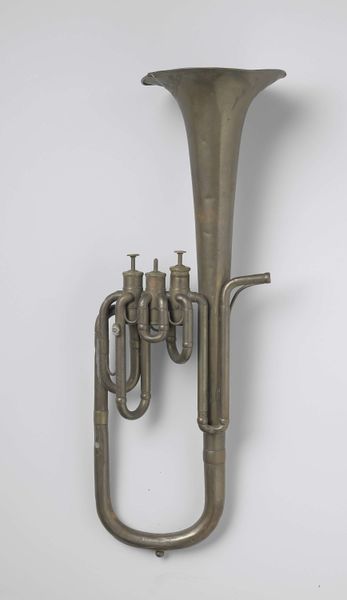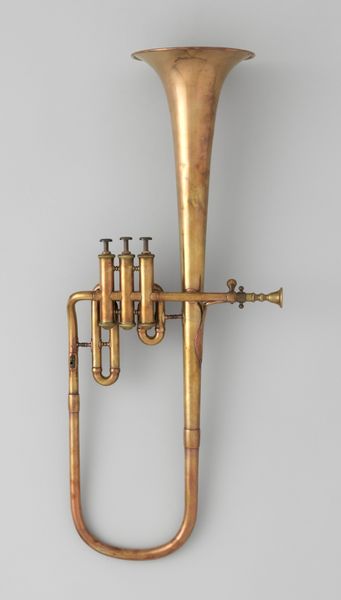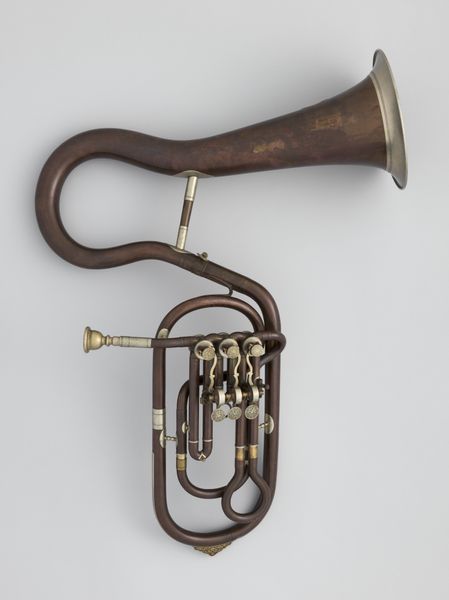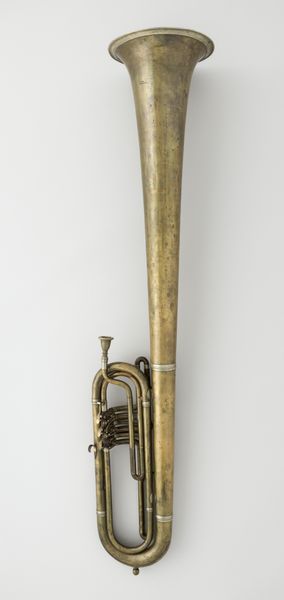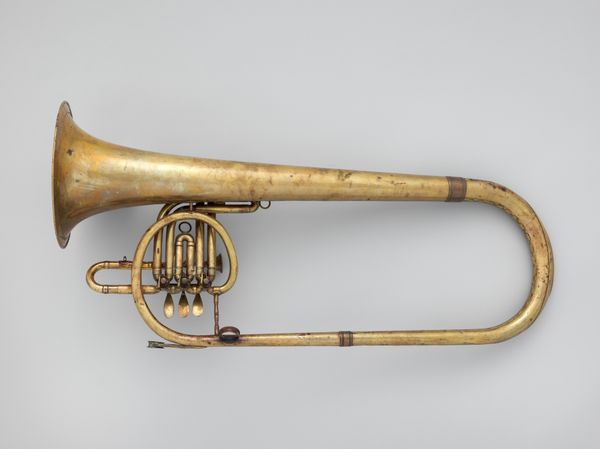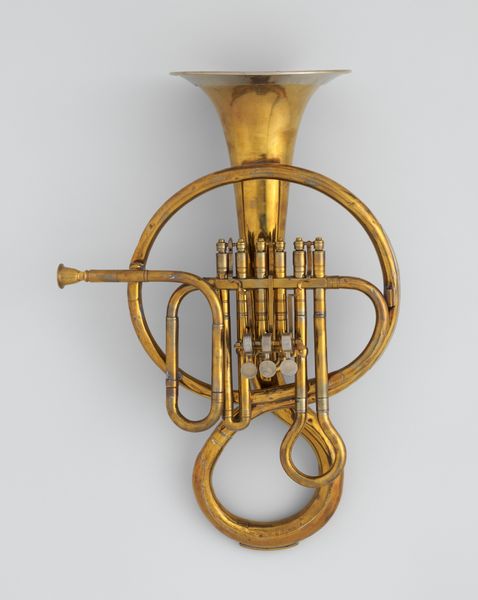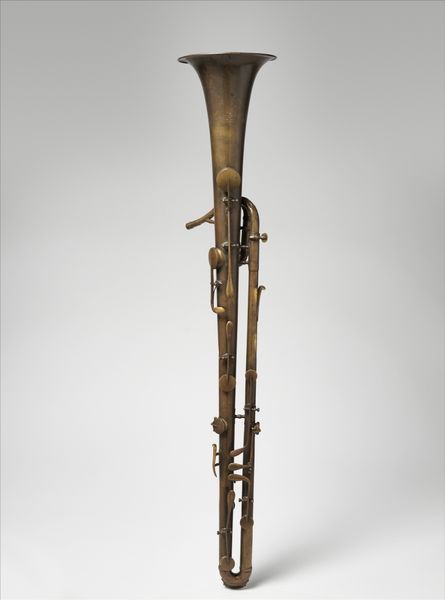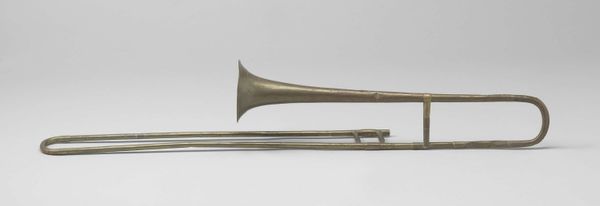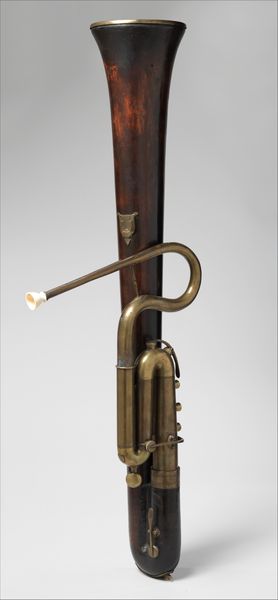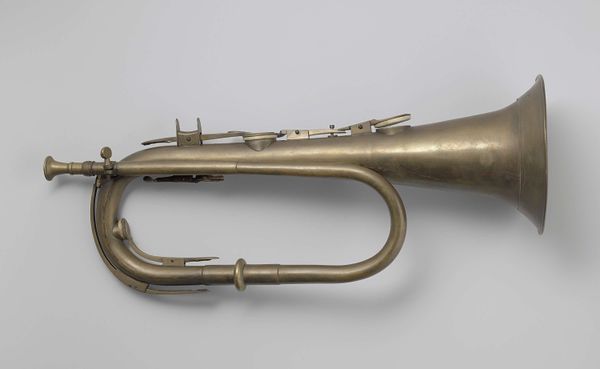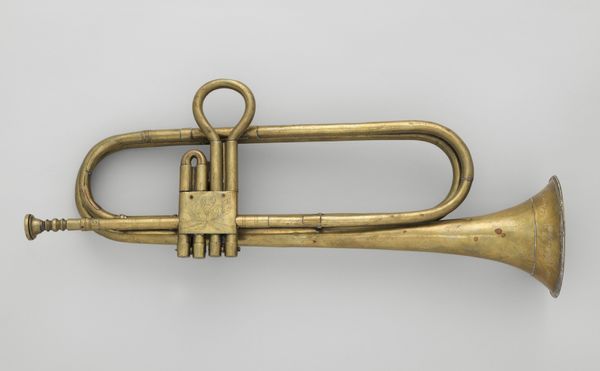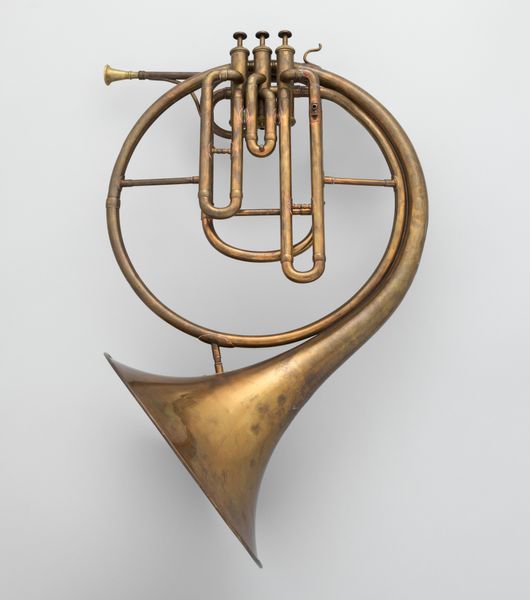
brass, metal, sculpture
#
brass
#
metal
#
sculpture
#
sculpture
#
musical-instrument
Dimensions: 59 1/2 × 18 1/2 × 11 3/8 in., 10 lb. (151.1 × 47 × 28.9 cm, 4535.97g) Diameter (Of bell): 11 1/4 in. (28.6 cm)
Copyright: Public Domain
The Contrabass Valve Ophicleide in D was made by Leopold Uhlmann, a Viennese instrument maker, sometime in the mid-19th century. Considered alongside the social history of music, we can ask: what role would an instrument like this play in the cultural life of the time? The ophicleide emerged in the early 19th century as a keyed brass instrument, intended to strengthen the bass section of orchestras and military bands. Its imposing size and sound reflect the growing scale of public musical performances, mirroring the rise of nationalism and civic pride. By the mid-19th century, however, the ophicleide was already becoming obsolete, displaced by the tuba. Surviving instruments like this one offer insights into changing musical tastes and the constant evolution of technology in response to cultural shifts. To understand this object fully, researchers might consult historical instrument catalogs, musical scores, and accounts of contemporary performances. Ultimately, the meaning of this ophicleide lies not just in its physical form, but in the social and institutional contexts that shaped its creation and use.
Comments
No comments
Be the first to comment and join the conversation on the ultimate creative platform.
